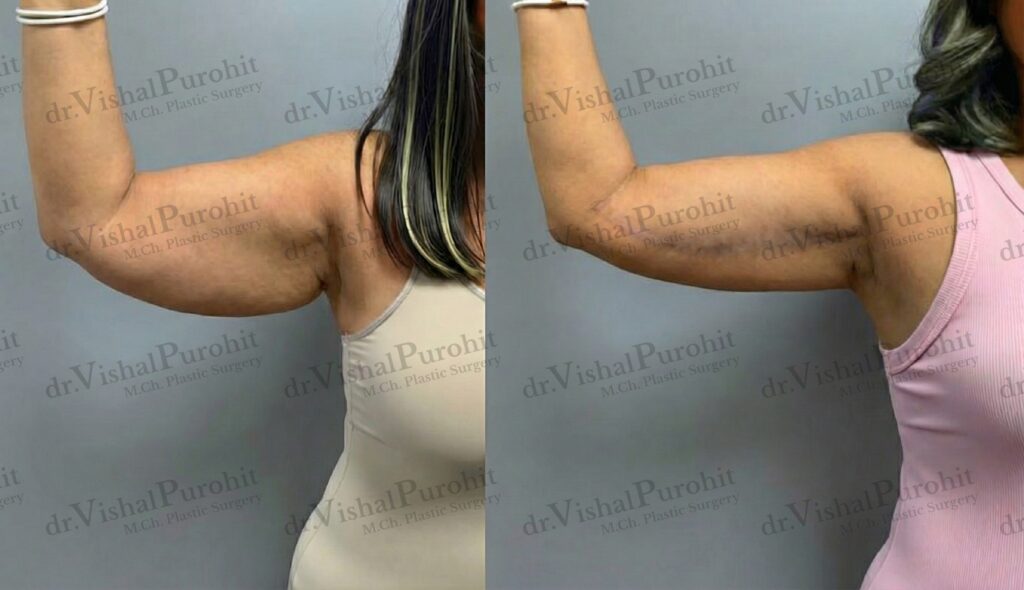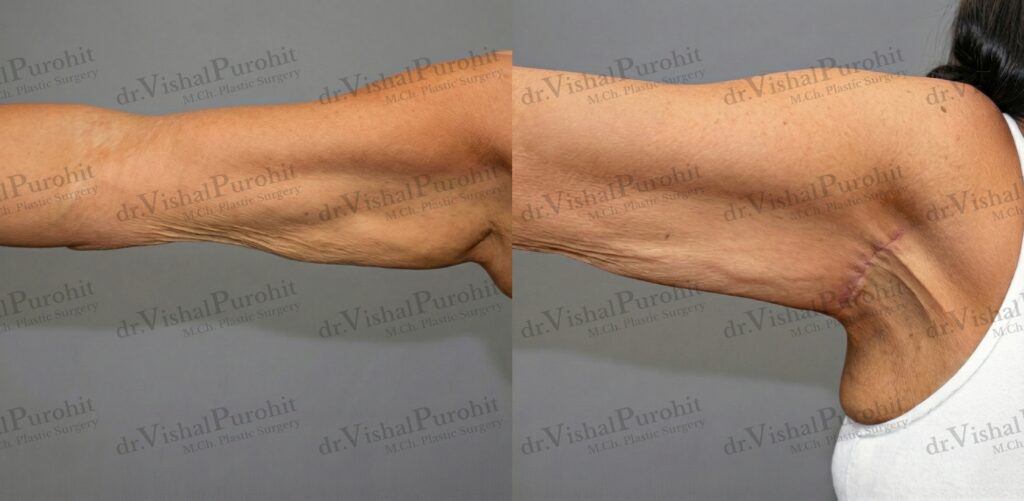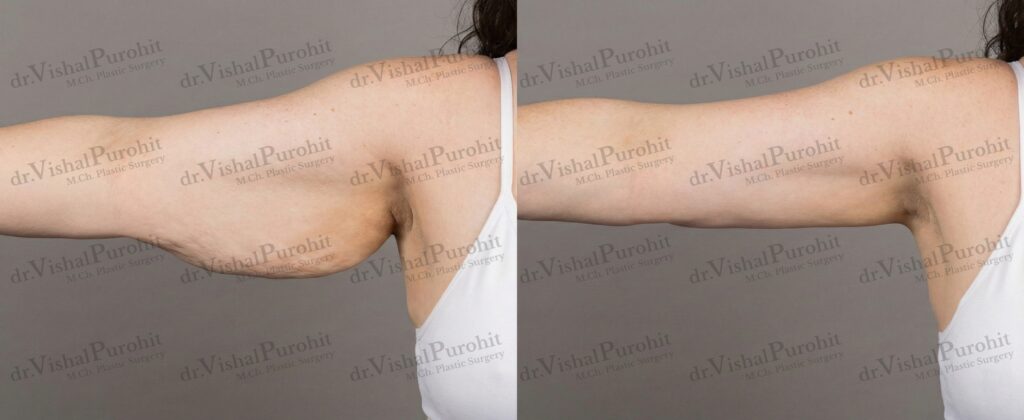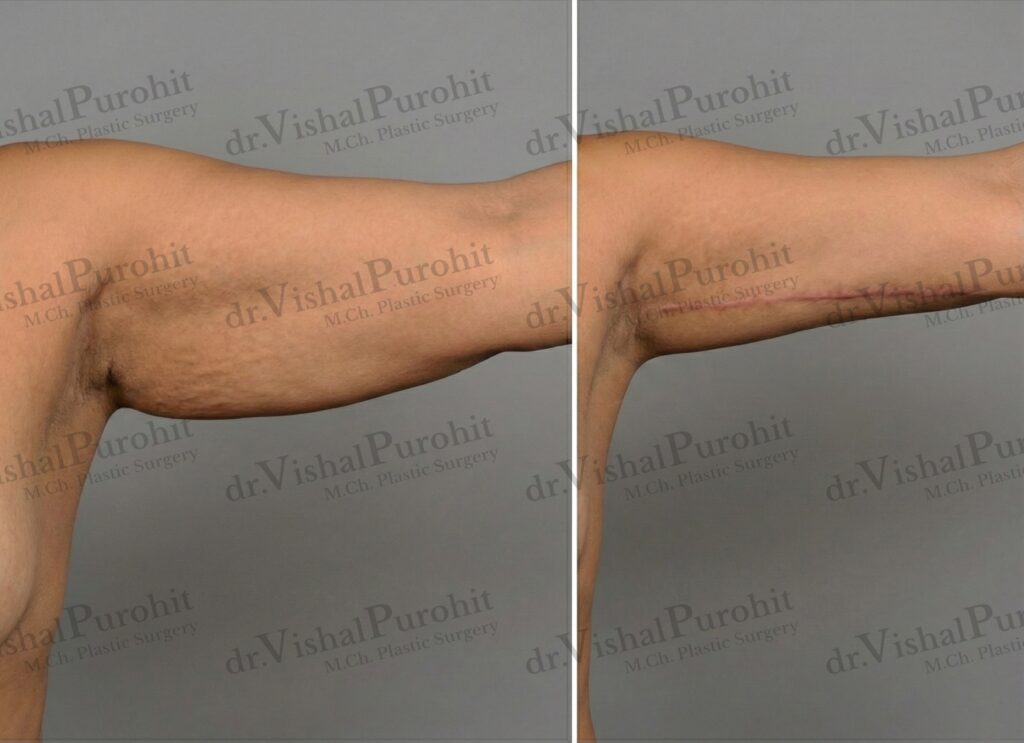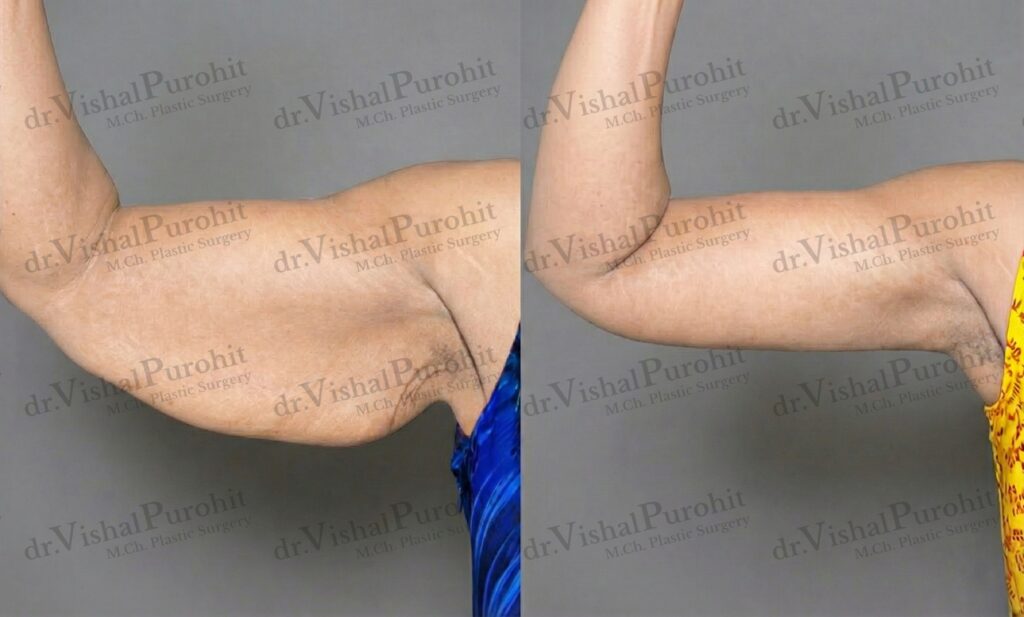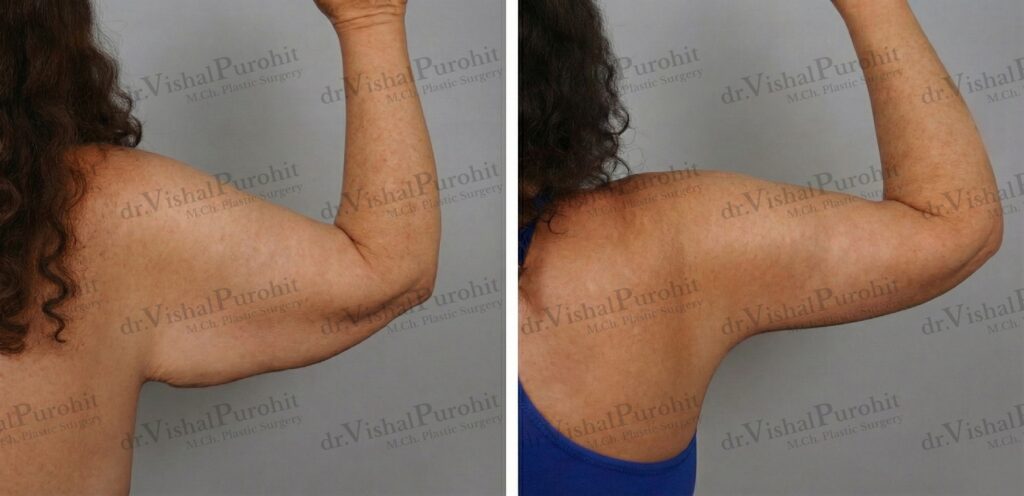Introduction to Brachioplasty Scar Management
Understanding Brachioplasty
Brachioplasty, commonly referred to as an arm lift, is a surgical procedure that has gained significant traction in the realm of plastic and cosmetic surgery. This transformative procedure primarily aims at reshaping the under portion of the upper arm, from the underarm region to the elbow. By removing excess skin and fat, brachioplasty helps in sculpting a more toned and defined arm contour. However, as with many cosmetic surgeries, it’s important to acknowledge the presence of post-surgical scars, a natural outcome of the body’s healing process. Understanding the nuances of brachioplasty, from its procedure to its outcomes, is the first step towards a successful arm lift journey.
Importance of Scar Management
The management of scars post-brachioplasty is a critical aspect that can significantly influence the overall results of the surgery. Effective scar management not only enhances the aesthetic appeal but also plays a vital role in ensuring comfort and minimizing potential complications. A well-managed scar can become barely noticeable, blending seamlessly with the skin’s natural tone and texture. On the contrary, poorly managed scars might lead to dissatisfaction, discomfort, and in some cases, additional health concerns. Hence, understanding and implementing robust scar management techniques are essential for anyone considering or having undergone a brachioplasty.
Overview of the Blog Content
This comprehensive guide delves into the intricacies of scar management post-brachioplasty. We aim to equip you with essential knowledge and practical tips to ensure your scars heal optimally, leaving you with satisfying results from your arm lift surgery. This article covers all the facets of scar management, from pre-operative skin preparation to long-term scar care strategies. Furthermore, we will explore the impact of lifestyle choices and professional treatment options on scar healing. Our goal is to provide you with a roadmap for navigating the journey of scar management, ensuring a smooth and successful recovery process.
Pre-Operative Considerations for Brachioplasty
Selecting the Right Surgeon
Choosing a qualified and experienced surgeon for your brachioplasty is paramount. This decision can significantly impact not only the surgical outcome but also the ease of your recovery and scar management. Look for a surgeon who is board-certified in plastic surgery and has a track record of successful brachioplasties. It’s not essential to review their portfolio of before-and-after photos because other people’s results will not translate into yours but do read patient testimonials to gauge their expertise and patient satisfaction levels.
- Credentials: Verify the surgeon’s board certification and professional affiliations.
- Experience: Assess the surgeon’s experience specifically in brachioplasty procedures.
- Patient Feedback: Look for reviews and testimonials from previous patients.
Understanding the Surgery Process
Gaining a thorough understanding of the brachioplasty procedure is crucial. Familiarize yourself with the surgical process, including the techniques used, the recovery timeline, and the expected outcomes. Educating yourself about the procedure will help set realistic expectations and prepare you mentally for the surgery and recovery period. For a more detailed understanding, refer to “is Brachioplasty Safe? The risks, Complications and their Management”.
- Surgical Techniques: Learn about the different surgical techniques and how they might affect scar formation.
- Recovery Timeline: Understand the typical recovery timeline and post-operative care requirements.
- Expected Results: Set realistic expectations about the surgical outcomes, including scarring.
Preparing Your Skin for Surgery
The condition of your skin before surgery can influence both the surgical outcome and the healing process. It’s advisable to maintain a healthy skincare routine to ensure your skin is in optimal condition. Hydration, nutrition, and avoiding harmful habits like smoking can significantly impact your skin’s ability to heal and manage scarring effectively.
- Skincare Routine: Maintain a healthy skincare routine leading up to the surgery.
- Nutrition and Hydration: Ensure a well-balanced diet and adequate hydration for optimal skin health.
- Avoiding Harmful Habits: Refrain from smoking and excessive alcohol consumption.
According to the authors Garoosi, Kassra Mundra, Leela Jabbari, Kayvon Winocour, Julian Iorio, Matthew L Mathes, David W Kaoutzanis, Christodoulos of the paper “Postoperative Complications Following Body Contouring Procedures”, factors like obesity, tobacco use, diabetes, and hypertension can increase the risk of postoperative complications such as wound dehiscence. This emphasizes the importance of managing pre-existing conditions and maintaining a healthy lifestyle before undergoing a body contouring procedure like brachioplasty.
Immediate Post-Operative Care for Brachioplasty
First 24 Hours After Surgery
The first 24 hours post-brachioplasty are crucial for setting the stage for a smooth recovery and effective scar management. During this period, it is imperative to follow the surgeon’s instructions meticulously. Patients are typically advised to keep their arms elevated to reduce swelling and apply cold compresses intermittently to alleviate discomfort. Pain management, usually through prescribed medications, is also a key aspect during this phase. It’s essential to monitor for any signs of complications, such as excessive swelling, severe pain, or signs of infection.
- Arm Elevation: Keep arms elevated to minimize swelling.
- Cold Compresses: Apply to reduce discomfort and swelling.
- Pain Management: Follow prescribed pain management protocols.
Infection Prevention
Preventing infection is a top priority in the immediate post-operative phase. The surgical site should be kept clean and dry, and any dressings should be maintained as advised by the surgeon. Patients are often prescribed antibiotics as a preventive measure against infection. It’s also important to be vigilant for any signs of infection, such as redness, increased pain, fever, or discharge from the surgical site, and report them to the surgeon immediately. For more details on the recovery period read the article “Bouncing Back: The Arm Lift Recovery Journey” .
- Wound Care: Keep the surgical site clean and dry.
- Antibiotics: Adhere to any prescribed antibiotic regimen.
- Monitoring: Watch for signs of infection and report them promptly.
Initial Scar Treatment Approaches
Early scar management begins right after surgery. The use of specialized dressings that support wound healing and minimize scar formation is commonly recommended. Surgeons may also suggest gentle massage of the area once it is healed enough, to improve circulation and flexibility of the skin. This is a critical step in ensuring the best possible cosmetic outcome of the brachioplasty.
- Specialized Dressings: Use dressings that support wound healing and scar minimization.
- Gentle Massage: Once approved by the surgeon, gentle massage can aid in scar management.
According to the authors Chopra, Karan Kokosis, Georgios Slavin, Benjamin Williams, Eric Dellon, A Lee of the paper “Persistent Pain Following Aesthetic Plastic Surgery”, persistent pain after aesthetic plastic surgery, including brachioplasty, can be a significant issue, necessitating awareness and proper management strategies. This highlights the importance of early pain management and monitoring in the immediate post-operative phase of brachioplasty.
Long-Term Scar Management Strategies for Brachioplasty
Silicone-Based Products
Silicone-based products are widely recognized for their effectiveness in long-term scar management post-brachioplasty. These products, available in forms like sheets, gels, and strips, work by creating a protective barrier over the scar, maintaining hydration, and thereby reducing the formation of excess scar tissue. Regular use of silicone-based treatments can result in scars that are softer, flatter, and less visible.
- Forms of Silicone Products: Sheets, gels, and strips.
- Application: Regular application as per product instructions.
- Benefits: Helps in scar softening, flattening, and reducing visibility.
Pressure Garments
The use of pressure garments is another essential strategy in managing scars after brachioplasty. These garments apply steady pressure on the scarred area, which can help in reducing scar thickness and improving its overall appearance. Wearing these garments as recommended by your surgeon can be highly beneficial in the long-term management of scars.
- Function: Applies pressure to minimize scar thickness.
- Usage: Should be worn as recommended by the surgeon.
- Advantage: Improves scar appearance and texture.
Advanced Topical Treatments
Beyond silicone-based products and pressure garments, various advanced topical treatments can be employed for scar management. These include ingredients like onion extract, vitamin E, and hyaluronic acid, which are known for their skin healing properties. Such treatments can enhance the overall appearance of scars by promoting better skin texture and color.
- Ingredients: Onion extract, vitamin E, hyaluronic acid.
- Application: Regular application as per guidelines.
- Effectiveness: Aids in improving skin texture and scar color.
According to the author Ibrahiem, Saad Mohamed Saad of the paper “Surgical Excision for Arm Skin Laxity”, many patients express concerns about the prominent long scars associated with brachioplasty. This underscores the importance of effective long-term scar management strategies to alleviate such concerns and improve cosmetic outcomes.
“Elevate Your Look: Arm Lift Benefits” offers additional insights into the benefits of an arm lift, complementing the information on scar management.
Lifestyle and Environmental Factors in Brachioplasty Scar Healing
Diet and Hydration for Skin Health
A well-balanced diet and proper hydration play a pivotal role in skin health, particularly in the healing process post-brachioplasty. Nutrients like vitamins C and E, zinc, and protein are essential for wound healing and collagen formation, which are critical for scar healing. Adequate hydration helps maintain skin elasticity and resilience, further aiding in the recovery process.
- Essential Nutrients: Include vitamins C and E, zinc, and protein in your diet.
- Hydration: Drink plenty of water to maintain skin hydration.
- Balanced Diet: Ensure a well-rounded diet to support overall skin health.
Protecting Scars from the Sun
Sun protection is crucial for scar care after brachioplasty. UV rays can cause scars to become darker and more pronounced. It’s recommended to keep the scarred area covered or use a high SPF sunscreen to protect it from sun exposure, especially in the months following surgery.
- Sunscreen: Use a high SPF sunscreen on the scarred area.
- Covering Up: Wear protective clothing to shield scars from direct sunlight.
- Timing: Limit sun exposure, especially during peak hours.
Physical Activity and Scar Healing
Moderate physical activity can be beneficial for scar healing, as it promotes blood circulation. However, it’s important to avoid strenuous activities that might put excessive strain on the healing tissues. Following the surgeon’s guidelines on when to resume physical activities is crucial for a smooth recovery.
- Moderate Exercise: Engage in light to moderate activities as advised.
- Avoid Strain: Steer clear of strenuous exercises during the initial healing phase.
- Guided Resumption: Follow the surgeon’s advice on gradually resuming physical activities.
“Defying Age: Arm Lift for the Matured Arms” provides a broader context of brachioplasty and its benefits, complementing the focus on lifestyle factors in scar management.
Summary
Recap of Key Points
This comprehensive guide on brachioplasty, also known as an arm lift, has explored various aspects of the procedure, recovery, and long-term care. Key topics included the preparation steps, immediate post-operative care, long-term scar management strategies, and the influence of lifestyle and environmental factors on healing. Emphasizing the nuances of each stage, the guide provided valuable insights for individuals considering or undergoing brachioplasty.
The Importance of Consistent Care
Consistent care and adherence to prescribed guidelines are crucial for optimal healing and results post-brachioplasty. From initial wound care to long-term scar management, each step plays a vital role in ensuring a successful outcome. It’s important to remember that the journey doesn’t end with the surgery but continues through diligent post-operative care and lifestyle adjustments.
Contacting a Professional for Personalized Advice
For personalized advice and a tailored approach to your arm lift journey, it’s recommended to consult with a professional. Dr. Vishal Purohit, an experienced surgeon in this field, is available for consultations. You can reach out to Dr. Purohit for expert guidance on brachioplasty by calling or contacting via WhatsApp or Telegram at +91-7718183535. For more comprehensive information on arm lift procedures, visit the main article on Arm Lift. Additionally, you can find the location of Dr. Vishal Purohit’s clinic via this Google Maps link.
Disclaimer: This article is intended for informational purposes only. It is not a substitute for professional medical advice, diagnosis, or treatment. Always seek the advice of your physician or other qualified health provider with any questions you may have regarding a medical condition. Never disregard professional medical advice or delay in seeking it because of something you have read on this website.








